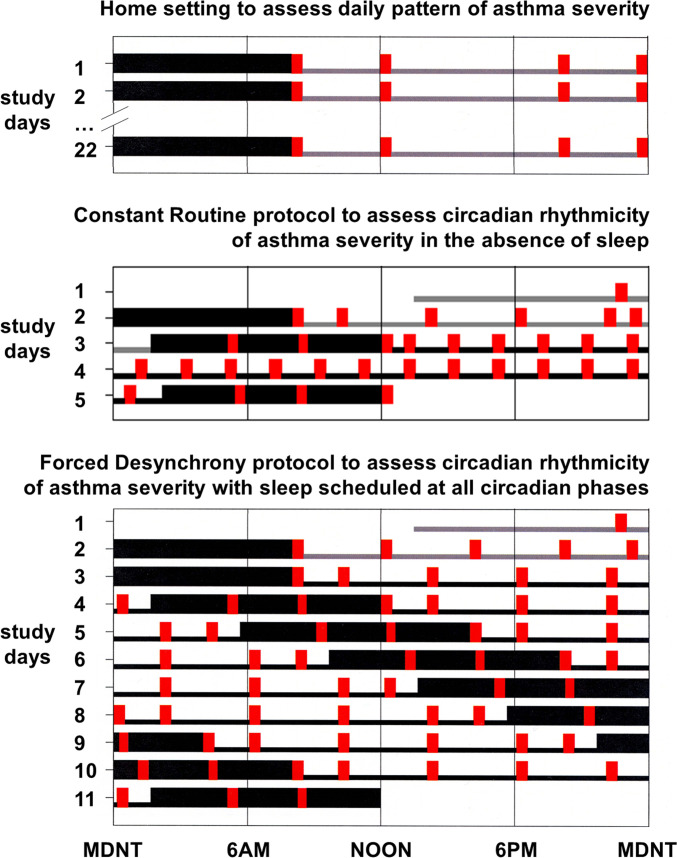Fig. 1.
Ambulatory, CR, and FD protocols. Wide black bars represent sleep episodes; narrow gray bars represent wakefulness in normal lighting conditions; narrow black bars represent wake episodes in dim light (∼2 lx); and red bars represent recordings of FEV1 (plus airway resistance when in the laboratory) and breathing discomfort every 2 to 4 h, including immediately after regularly scheduled awakenings from sleep when in the laboratory. Times of any rescue medication use were also recorded. The ∼3 wk (median 22 d) ambulatory protocol (Top) assessed the daily pattern of asthma in the home. Participants maintained a self-selected regular 8-h sleep schedule. The CR protocol (Middle) assessed the circadian rhythm of asthma without sleep while minimizing masking effects of the environment and behaviors. The CR lasted 5 d with 2 baseline days and nights and 38 h of wakefulness in a semirecumbent posture in an individual laboratory suite in dim light, with 2-hourly isocaloric snacks. The FD protocol (Bottom) assessed the separate effects of the circadian system and the behavioral sleep/wake schedule on asthma. The FD lasted 11 d with 2 baseline days and nights and then seven × 28-h “days” in an individual laboratory suite in dim light.

